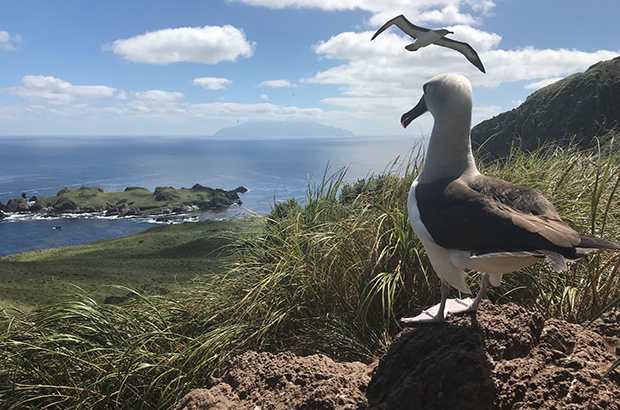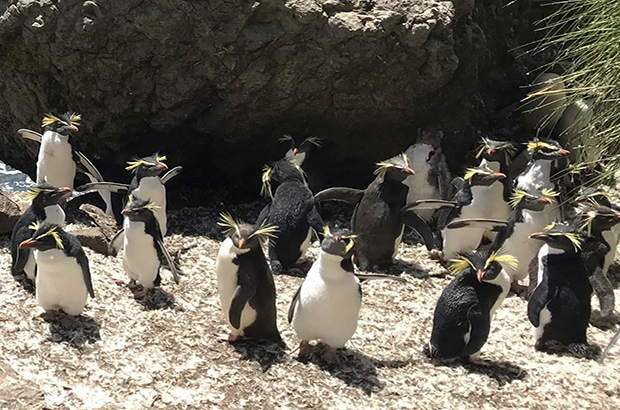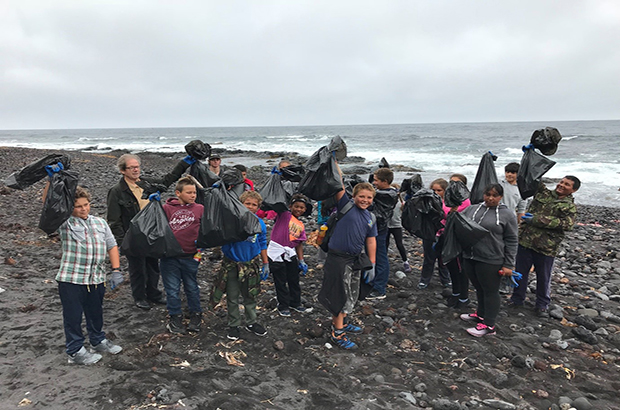Oliver Yates, Senior Marine Science Advisor, based at Cefas, provides an update on his work with the Tristan da Cunha Fisheries and Conservation Departments and Island Administrator to support delivery of research to inform a marine protection strategy for the area. This will help ensure that the 750,000 km2 Exclusive Economic Zone around the islands will be sustainably managed.

In January 2018, I visited Tristan with colleagues Dr Martin Collins (Cefas) and Craig McGarvey (MMO) to meet with the Administration, Fisheries and Conservation Departments and to discuss progress and priority actions. I then stayed on the island to work with the Tristan teams and to join the longline vessel Edinburgh to monitor the operation and catch during a commercial fishing trip.
This visit helped the Blue Belt team to gain a better appreciation of the logistics and challenges involved with the local delivery of the programme as well as getting some hands on experience helping conduct work around the islands.
During my time in the archipelago, I visited all four of the islands in the Tristan da Cunha group and was lucky enough to go ashore to spend a day at Nightingale Island, a haven for wildlife with nesting yellow-nosed albatrosses, great shearwaters and northern rockhopper penguins.

A main objective for my trip was to engage with the Tristan community to present the progress made so far through the Blue Belt programme and discuss the priorities and plans for the coming years. The island community has a strong sense of pride for their environment and there was great interest in learning more about how the Blue Belt will help generate the science that will underpin their eventual decision on the nature and details of their marine protection strategy.
As part of this engagement I gave a community talk at the local Tourism Centre on the Blue Belt objectives and was able to brief the local community through many informal discussions on progress and the plans for the next two years. Local attendees were particularly interested that the necessary science is delivered to safeguard sustainable fisheries into the future.

During my stay, one of my main objectives was to join the fishing vessel Edinburgh to collect additional biological data for a biomass assessment of the bluenose warehou, a whitefish highly valued in fish markets from the US to Australia. This species of fish is caught around the seamounts of Tristan’s EEZ, as well as in the Indian Ocean and around New Zealand and Australia. The bluenose were just starting to spawn about half way through the trip (coinciding with Valentine’s day!). From a scientific perspective, this was useful as it afforded a good sample of the different stages of sexual maturity. During the trip I was able to assess the fishing operation and gear, for any impacts on non-commercial species.
We were very pleased to see that the crew were already using a combination of conservation measures considered “best practice”. I was also able to offer some additional recommendations which should help reduce any negative impacts to negligible levels.

For the younger members of the community, I gave a talk on Tristan’s seamounts at their local school. Subsequently the upper classes helped conduct a survey down at Hottentot beach to identify the level of marine litter that is washed up on Tristan’s shores. This will be developed into a longer-term monitoring effort to help judge accumulation rates at different locations around the islands.
The generosity, kindness and warm welcome that I received from the Tristan islanders was something I will always remember. I hope to visit again soon.
Want to know more about the Blue Belt programme? Sign up for the e-newsletter. You can also follow the team on Twitter @ukgovbluebelt.